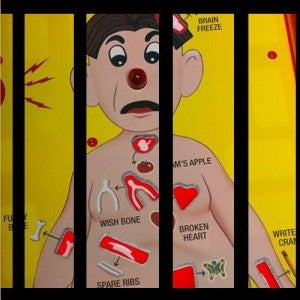The Chinese government has many strengths, but I don’t think that international PR is one of them. In a report released from the Chinese Health Ministry, and reported in their nationalized press last week, China announced it is working with the Red Cross to create a new nation wide system by which volunteers can donate their organs after death. Yay! [The entire world cheers and applauds China for its efforts] The report then goes on to mention that up to this point, about 65% of organ donors were executed prisoners. Boo! [Suddenly China doesn’t have anyone to sit with at the lunch table]

Yes, China finally confirmed that a huge percentage of its organs were harvested under dubious conditions. Reportedly one organ in ten went to organ tourists, though the government cracked down on organ tourism and Internet organ brokers in time for the Beijing Olympics. Organ trafficking is still a big problem, as we mentioned when discussing Britain’s approach to private organ sales. China faces an enormous hurdle when moving into a public organ donation system. There are about 1 million people waiting for organs, but only about 130 registered donors. (Yes, those are the correct numbers) Wouldn’t it be wonderful if a great portion of the necessary organs could be generated artificially?
As we’ve mentioned, researchers are making meaningful progress in creating reliable artificial organs, often by utilizing stem cells. China has already made important contributions in the use of stem cells, though some reports are misleading. We are years away from seeing these artificial creations transplanted into a human host, but that time table could undoubtedly be shortened if China threw its scientific weight towards reaching that goal. Honestly, I think that creating enough artificial organs may take less time than arranging a nation wide system of living and deceased donors. The US system of connecting donors to recipients is still developing, but took about 20 years to reach what we would recognize today.
Let’s look at China’s problem. Previously, 65% of all donations came from executed criminals. Amnesty International estimates that there were about 1700 such people in 2006. China won’t say how many there actually were, but they do say that these “donors” were optimized: they were tested thoroughly for compatibility and killed in a way that minimized organ damage. Counting corneas, kidneys, livers, lungs, etc, each person might be able to donate 6-12 organs. But that’s wishful thinking. Even with that 35% of non-criminal (and living) donors, only about 1% of those needing organs receive them each year.
In short, China needs 1 million, it has about 10,000. Under the old system of harvesting convicts, there’s no way China could match that need. Under the new system, about one Chinese citizen in every thousand would have to donate. The current US rate is about one in twenty thousand. Either China will have the highest rate of donation in the world, or they will need to find another source of organs.
Science! Science is the answer. Artificial organs may take years to perfect and produce on a mass scale, but so will ramping up a national Chinese donation system. Why not run both projects in parallel? Likewise, virtually every other country in the world is experiencing an “organ shortage”. Though few are in as bad a position at China, each nation could use more organs. You can never have enough organs, as the old saying goes. Already millions of dollars are spent in research for artificial ones, but stepping up that spending, dedicating more resources nationally and globally, may be the only successful long term solution.



